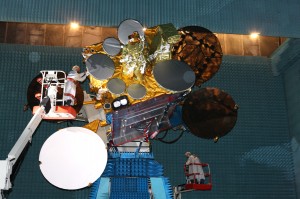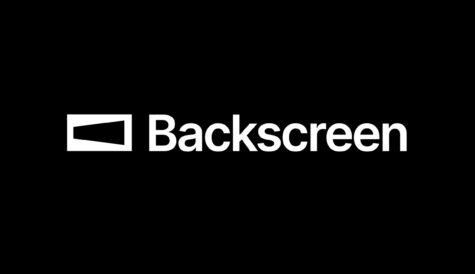Space for more: satellite operators go interactive
Satellite operators are seeking to deliver TV services that match the functionality of fixed-line operators by adding interactive functionality to their platforms, but there’s good mileage in linear TV yet. Adrian Pennington reports.
The emergence of connected devices with the potential to access content has fuelled the development of broadband distribution and positioned OTT providers as the main competitors to satellite distribution. But there are reasons to suggest that the satellite business has a lot of life in it yet.
“Long-term there will be an impact on broadcast delivery – but not necessarily in the way consumers actually access content,” argues Carl Hibbert, senior analyst, Futuresource Consulting. “Infrastructure will evolve from DVB/QAM to IP, particularly in the case of cable. From an actual service proposition, though, linear TV viewing will be here for a significant amount of time.”
Growing linear
The number of linear TV channels worldwide continues to grow, from 23,000 to 33,000 over the last five years, and is expected to reach 50,000 by 2022, according to Eutelsat.
“Non-linear consumption is the clear driver for broadband distribution but it is not currently negatively impacting linear TV consumption,” says Bernard Riera, GlobeCast’s director of new technologies and innovation.
One of satellite’s strengths, as yet unmatched by terrestrial technology, is its ability to deliver video to remote areas. Despite the advances made in cellular bonding, in many regions of the world, satellite remains the only way to distribute video content due to the lack of suitable terrestrial broadband networks.
“Satellite reaches areas where terrestrial broadband connections are prohibitively expensive and the bandwidth for this can be provided by satellite easily and economically, especially with the introduction of HTS capacity,” observes Jacob Keret, senior vice-president, sales, Europe for Israel-based satellite operator Spacecom. Using Spacecom’s Amos satellite platform, Keret says VSAT providers can deliver a “congestion-free” broadband service to position themselves as an end-to-end communications service provider.
“What’s more, DTH TV providers can complement their broadcasting service offering by adding two-way broadband connectivity for their customers in remote locations,” he says. “ISPs using the Amos satellite constellation can also benefit from bandwidth for IP backbone connectivity.”
Nevertheless, terrestrial networks retain advantages in delivering user-friendly broadband access for OTT services.
“It’s important that end-users can easily select and buy the content they want; the GUI is vital,” says Keret. “Delivering big files is, of course, something that satellite is able to achieve in a very efficient way because it can provide high bit-rate capacity to anyone in the satellite footprint. As regards access to the portal, we believe that broadband terrestrial networks, including mobile, remain the easiest way to provide the service to the consumer.”
SNG services
OTT presents challenges for some traditional satellite applications. For SIS Live managing director David Meynell, the growth of OTT is both a threat and an opportunity. “I’d say satellite is still the only means of communications for high bandwidth data where you can guarantee an uncontended service,” he says.
Meynell speaks from a position of strength, with SIS Live having just signed a seven-year deal with ITV and ITN to supply satellite news gathering (SNG). The pair do not take huge operational decisions lightly and would have factored in advances and costs of delivery by IP or wireless. “There’s a time and place for a mix of technology, including fibre, IP, satellite and 3G/4G bonded networks,” says Meynell.
Each of ITV/ITN’s new 18-vehicle fleet has redundant transmit chains and features a generator with battery-powered UPS backup. An enhanced dual modem system ensures the most efficient and reliable use of bandwidth for IP over satellite. ITV and ITN will be the first to benefit from SIS Live’s extended IP services which sees the launch of a new iDirect hub at MediaCityUK to work alongside its existing Milton Keynes iDirect services. This new infrastructure provides greater resilience and additional new functionality.
Meynell believes that the satellite mobile uplink has a good few years of life yet as being the primary means of getting news and live events back: “Where a customer needs bandwidth in any location at relatively short notice then satellite leads the way by some margin.”[icitspot id=”161682″ template=”box-story”]
Nonetheless, the economics of fibre are becoming attractive. SIS Live assists in the contribution of live content from sports venues – historically by sending satellite trucks.
“We’ve calculated this on the basis of the cost of fibre to us and the cost of fixed infrastructure required on-site,” says Meynell. “Three years ago the trigger point that made fibre economical from a venue was delivery of 40 events per year. That multiple has now come down to 20 events.”
Economical way
Satellite is also still well-placed to deliver a reliable return channel for OU applications.
“We are using satellite for return path for most of our operations and we are also working hard to ensure that satellite capacity usage is maximized at all times,” Meynell explains. “For sake of argument, on previous calculations ITN would have leased 55MHz from us and included in that was a comms channel of a fixed 1-2MHz. While at the peak hours of lunchtime and evening news the capacity would be running high, at other times ITN only had 1-2Mhz of return path in use. As part of the current contract, our software enables the dynamic allocation of bandwidth between DVB and IP carriers.”
Satellite remains the most economical way of feed delivery to masses since one transponder can easily cover a medium sized country. “It is easy to imagine that due to the coverage factor, a satellite allows flexibility and scalability unmatched by other means of transportation,” states IHS analyst Przemek Bozek. “Unfortunately, the same satellite is optimised for linear content carriage. Non-linear content must be supported by complementary technologies.”
Push services to hard drives can be economically supported via satellite, regardless of return channel technology, according to Keret. “HTS [high throughput satellite] capacity pricing and the impact of mass market deployments of consumer terminals on CPE prices makes satellite return channel an eligible option,” he says. “However, the return channel can be provided using many other technologies, and makes the overall solution even more attractive, using available communication infrastructure, like ISDN or cellular networks.”
According to David Hochner, CEO at Satlink Communications, using OTT direct to devices via satellite is not yet viable: “But a combination of OTT with satellite with a kind of terrestrial WiFi system for integration of the return path might be a viable path.”
Satlink already provides OTT via terrestrial networks and Hochner says the company is in discussion with at least one satellite operator to be a joined into a consortium to trial a system combining satellite with terrestrial WiFi but it is still too early for Satlink to supply further details. “The main technical hurdles are in the receiving equipment, the interface and downconvertor, to marry the satellite frequency to the TV frequency which will be an IT environment,” Hochner says.
A satellite return path may be considered as a way of implementing interactive services in addition to DTH services. Nevertheless, from GlobeCast’s point of view, it is inefficient to consider satellite as a standalone solution to deliver interactive services to customers.
“Satellite should be part of a global technological ecosystem including broadband networks and DTT broadcast infrastructure,” agrees Riera. “Hybrid technologies and standards [such as HbbTV] help us to develop advanced solutions to respond to customer requirements in terms of interactivity and social TV solutions.”
There are many cases where traditional broadcasting is supported by broadband networks. DTH operators DirecTV (US), GVT (Brazil), Sky (UK), Canalsat (France) or Polsat (Poland) and telcos such as Orange, Deutsche Telekom or Telefónica have invested in hybrid networks which permit them to promote the best features from both technologies.
Satellite-only return
Last year GlobeCast, in partnership with news channel France 24, deployed an HbbTV trial including broadband delivery solutions (origin server and CDN) coupled with DTH distribution over SES and Arabsat: “We consider HbbTV to be a key part of what Globecast can offer to its customers in addition to DTH and OTT delivery solutions,” says Riera. [icitspot id=”161722″ template=”box-story”]
It’s a view also held at Eutelsat. “The complementary assets of broadcast and broadband operators enable widescale provision of a combination of homogenous quality linear TV with on-demand TV services,” says COO Jean-François Leprince-Ringuet.
The satellite-only return channel was standardised by the DVB in early 2000 but still awaits mass customer implementation. Many satellite operators have researched and developed IP-enabled devices which will be installed in the home network. It turns RF-modulated satellite television broadcasts directly into IP video streams. In different forms the concept has been heavily marketed by SES and Eutelsat. With its employment, LNB installed at customer premises will be able to send back a low bit-rate request via satellite back to the broadcaster.
Eutelsat’s ‘SmartLNB’ as described by Leprince-Ringuet, is an electronic feed connected to an antenna with embedded transmitter for interactive applications such as PPV, personal subscription management, audience measurement and live participation. The objective, he says, is to enable broadcasters and platform operators to bolt interactive value-added services onto their broadcast platforms, circumventing viewer dependency on terrestrial networks. It also prepares the ground for machine-to-machine and home automation applications.
“The ‘smart LNB’ is based on open standards [DVB-S2, IP] and highly efficient protocols developed by Eutelsat for the connection link, combined with optimised use of satellite spectrum in multiple frequency bands [C-, Ku-, Ka],” says Leprince-Ringuet. “As an IP-based tool, it will also enable content to be viewed on mobile devices in the home.” The proof-of-concept and first prototypes have been tested over Eutelsat satellites and are now ready for validation with platform operators and partners. Eutelsat has launched the industrialisation process with the first manufacturers.
CDN v DTH
There is a view that the cost of delivering even large video files over a CDN will soon become more economical than renting transponder space for most broadcasters. It’s a tricky proposition to judge since the CDN market is relatively new and most CDN providers don’t publish their prices.
IHS notes that in the UK the cost of an SD channel would be around US$40 an hour and HD would cost around 60-80% more, depending on bandwidth. Meanwhile, the cost of OTT transmission is decreasing and US$0.006 per hour can secure a stream, subject to other technological conditions.
“Price decrease has been about 15-20% annually prior to 2012, but in 2013 slowed to more like just under 5%, partly because there are fewer players due to consolidation, partly because it’s getting harder for CDNs to cut prices in competition,” says Bozek. “OTT seems to be a cheaper way of broadcasting for niche channels. However, it will not guarantee the scope and reach of satellite and revenue streams may be lower. Premium channels will justify paying a higher price for satellite.”
The DTH market is mature but prices are still driven not only by bandwidth allocation but by the value related to the audience addressed by the orbital position
“CDN price structure is based on a linear relationship between bandwidth consumption and the number of viewers,” says GlobeCast’s Riera. “Satellite capacity cost is still high, especially for the premium orbital positions, but we are seeing a trend to decrease the cost of these premium positions. For a broadcaster who needs to buy both satellite capacity and CDN resources, the satellite entry cost will be higher than CDN but satellite will be more economically efficient as the audience grows. Mixing the two approaches provides the broadcaster with the ability to optimise their delivery solution from both an economic and viewing experience perspective.”
Hybrid solutions – and a role for satellite – are likely to be around for some time.




